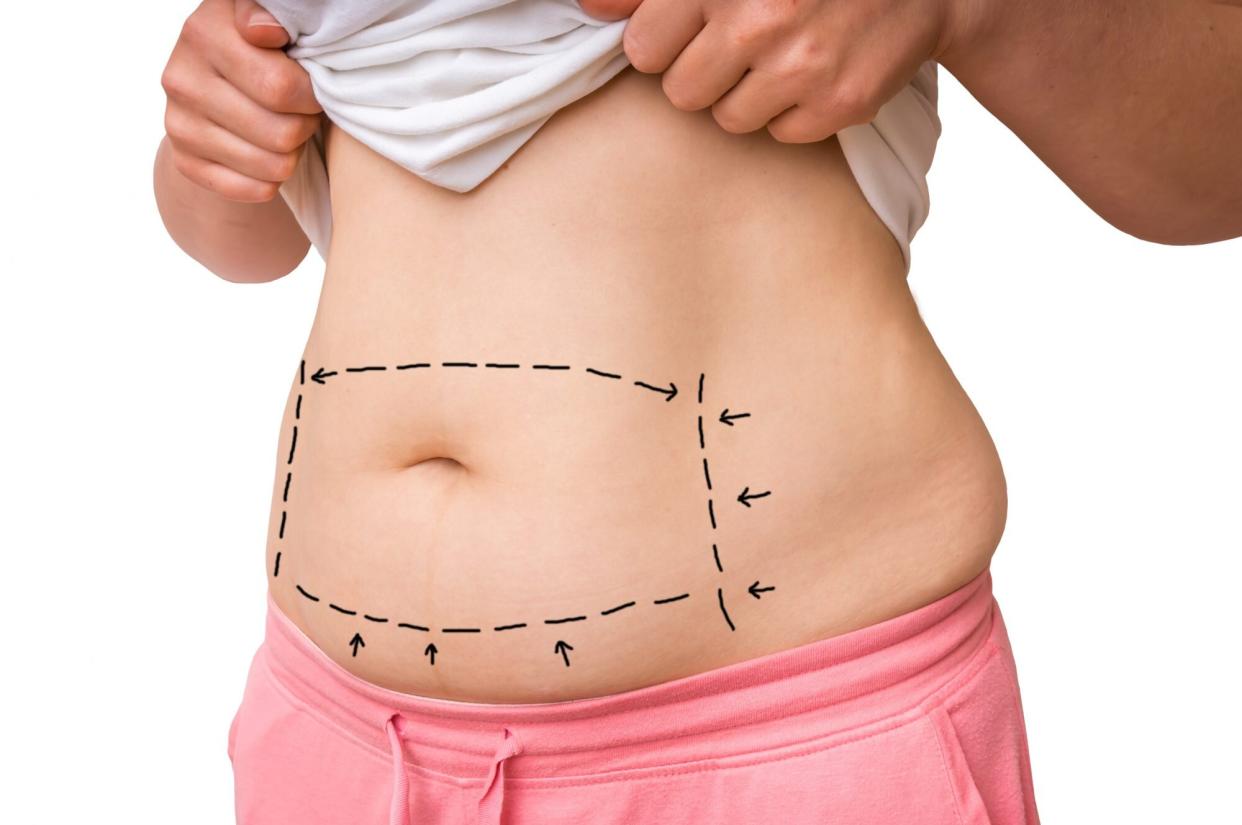Do You Need Diastasis Recti Surgery?

Getty Images
A few weeks after I delivered my twins, I discovered I had diastasis recti, a gap in my abdominal muscles that resulted in a rounded pooch. At that time, my OB-GYN said it would likely continue to improve, but probably not to my satisfaction, in which case I might consider surgery.
Given that diastasis recti is mainly considered a cosmetic concern, each mom's "satisfaction" will vary, of course. But here's a general idea of when surgery might be a reasonable solution after a devoted exercise regimen fails to yield the results you want.
Diastasis Recti Treatment with Exercise
Experts agree that exercise can help improve diastasis recti, and it should be the first course of action. Focus on movements that pull the abdominals in, like pelvic tilts, toe taps, heel slides, abdominal compressions, and single-leg stretches.
The key is to keep your belly pulled in and your core tightened, rather than letting it bulge out, as might happen in a traditional crunch or plank. If you see your belly rise up in a dome or mountain-like formation vertically along the midline of your abdomen, stop the movement. It could exacerbate the condition, says Kevin Brenner, M.D., F.A.C.S., a board certified plastic and reconstructive surgeon based in Beverly Hills.
You may do these exercises on your own, with a physical therapist, or with the help of an at-home exercise program (like the MUTU System, Tupler Technique, and Dia Method/Every Mother), which are specifically designed to help moms with diastasis recti. "Make sure to give yourself adequate time with physical therapy," says Ben Butts, P.T., director of rehabilitation services and Performance Therapy at Providence Saint John's Health Center in Santa Monica, California. "The body takes time to heal, and results are gradual." So remember that as eager as you are to see results, patience is the name of the game here.
RELATED: Diastasis Recti Exercises: Do's and Don'ts for Your Postpartum Pooch
When to Consider Diastasis Recti Surgery
If your diastasis recti is severe, or if it's not improving to your satisfaction after exercise, you may consider going under the knife to correct it. But "only consider surgery if conservative treatment of therapeutic exercise and physical therapy has failed," Butts says.
You'll also need to figure out if your diastasis recti is truly problematic. Butts says the separation should be at least as wide as two centimeters, or two finger widths, for you to be a candidate. "Also, consider if your diastasis recti is actually causing you pain. Is your motivation for surgery purely cosmetic versus functional? You have to consider post-surgical pain that you would have as well."
What Diastasis Recti Surgery Involves
Surgery for diastasis recti repair is substantial and should not be undertaken lightly. Technically, an operation that serves to repair diastasis recti is known as a tummy tuck, or abdominoplasty. "However, it's not a one-size-fits-all operation," says Dr. Brenner.
Some patients only need to have the muscle tightened, which can be done through an endoscopic-assisted modified tummy tuck. "Essentially, the muscle can be tightened from a bikini-line incision. This may require removal of a small amount of skin, but will not require an incision around the belly button," he says.
Other surgeries are more involved. Patients with a significant amount of excess skin in addition to the diastasis may need a full tummy tuck, in which the muscle is tightened, extra skin is removed, and the belly button is relocated to a new position within the abdominal skin. Ultimately, the right procedure is dictated by each individuals' anatomy.
After surgery, you'll need to make arrangements for a significant recovery period. Expect to have limited mobility for one to two weeks post-operation before you start getting back to your normal routine. Heavy lifting and core exercises will be restricted for about five to six weeks after surgery, and it will take much longer for the swelling to completely subside and for the scars to flatten, soften, and fade—about six months to a year.
Does Insurance Cover Diastasis Recti Repair?
You might hope—or even reasonably expect—that muscle repair would be a procedure covered by insurance, but typically it's not. "Repair of diastasis is a cosmetic procedure," says Dr. Brenner. The reason? Unlike with a hernia (which is an actual hole or defect in the abdominal wall), there's no possibility of the intestines getting stuck inside and damaged, Dr. Brenner explains. In other words, if you can live with how you look, you can generally live with diastasis recti.

